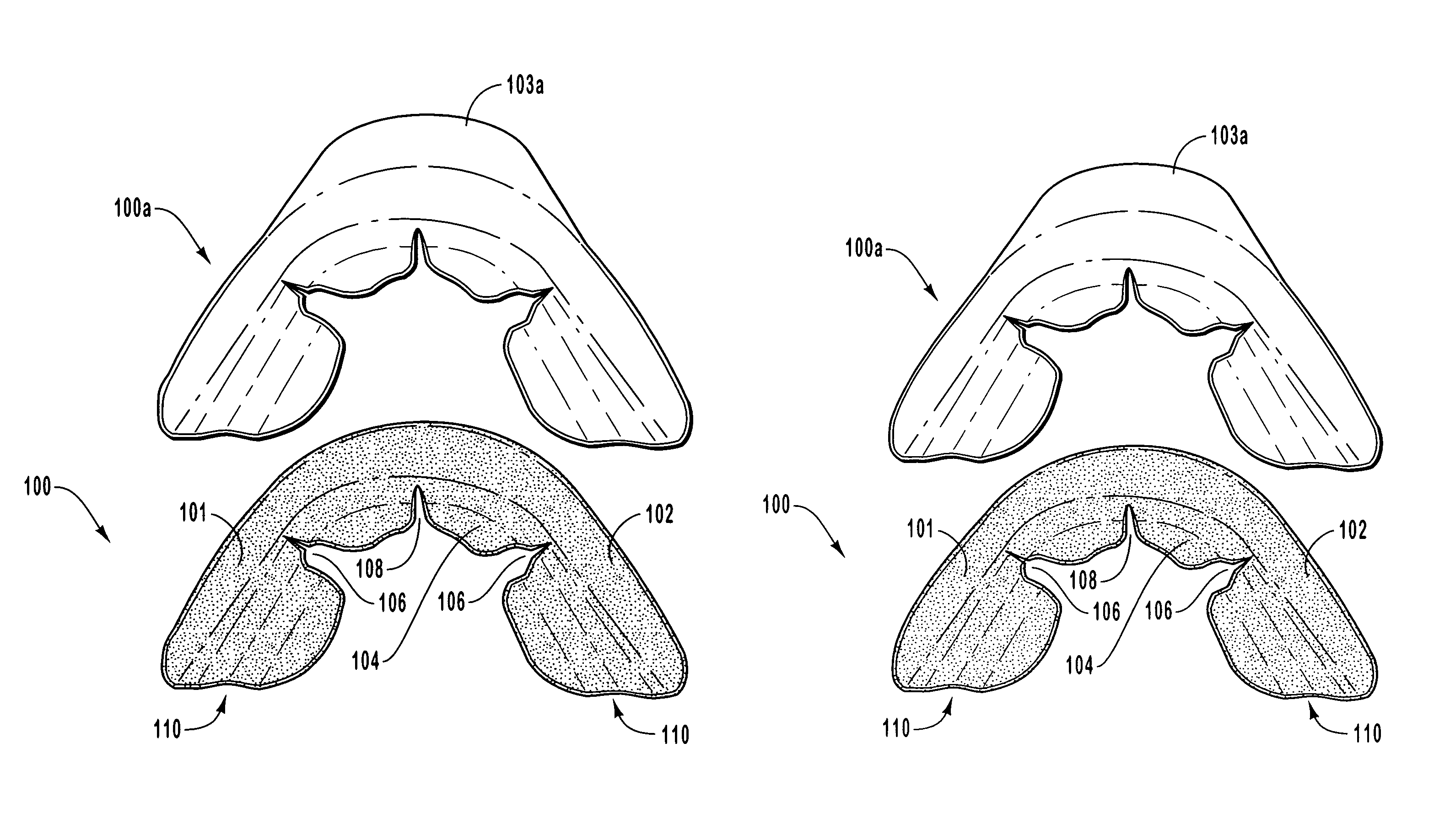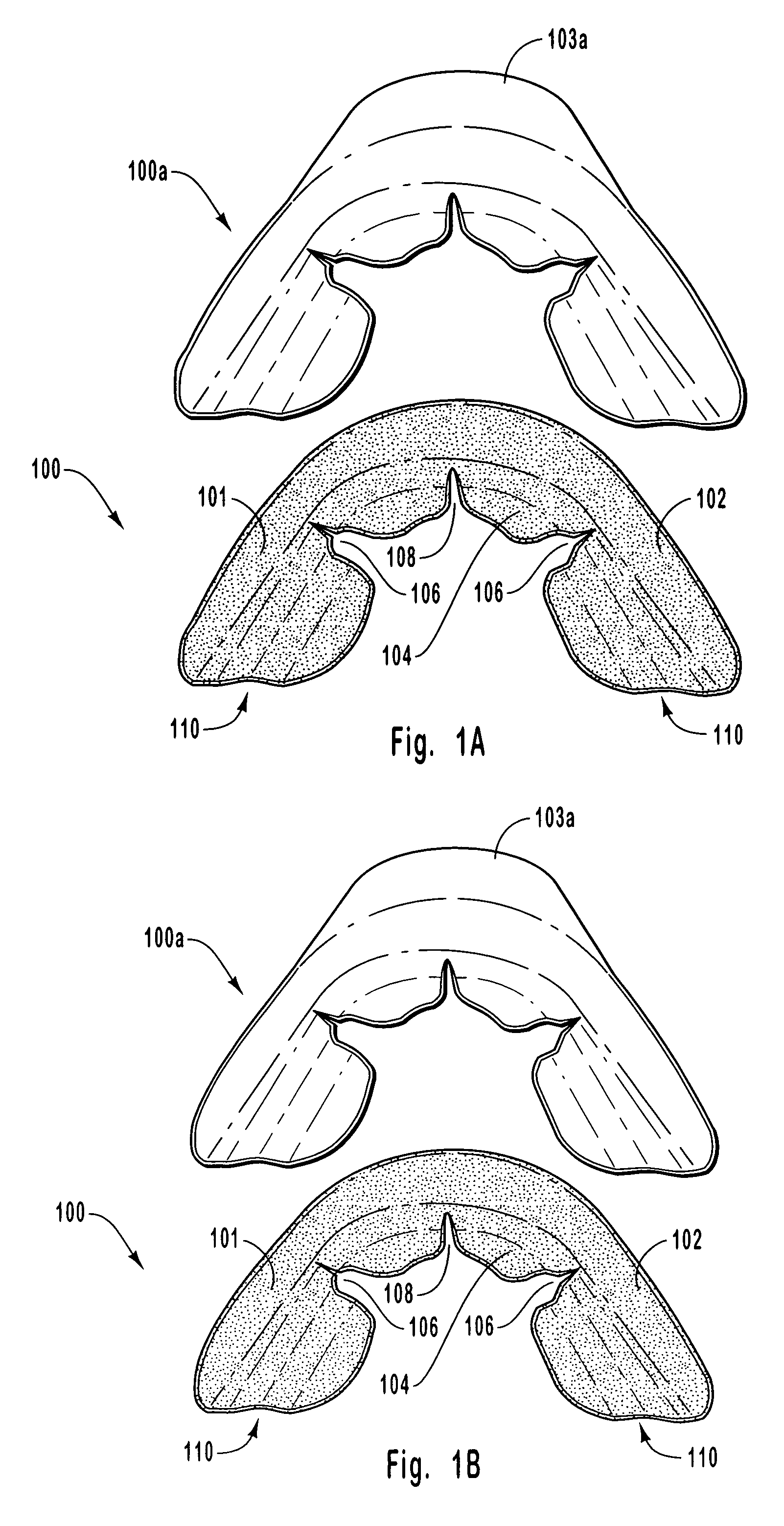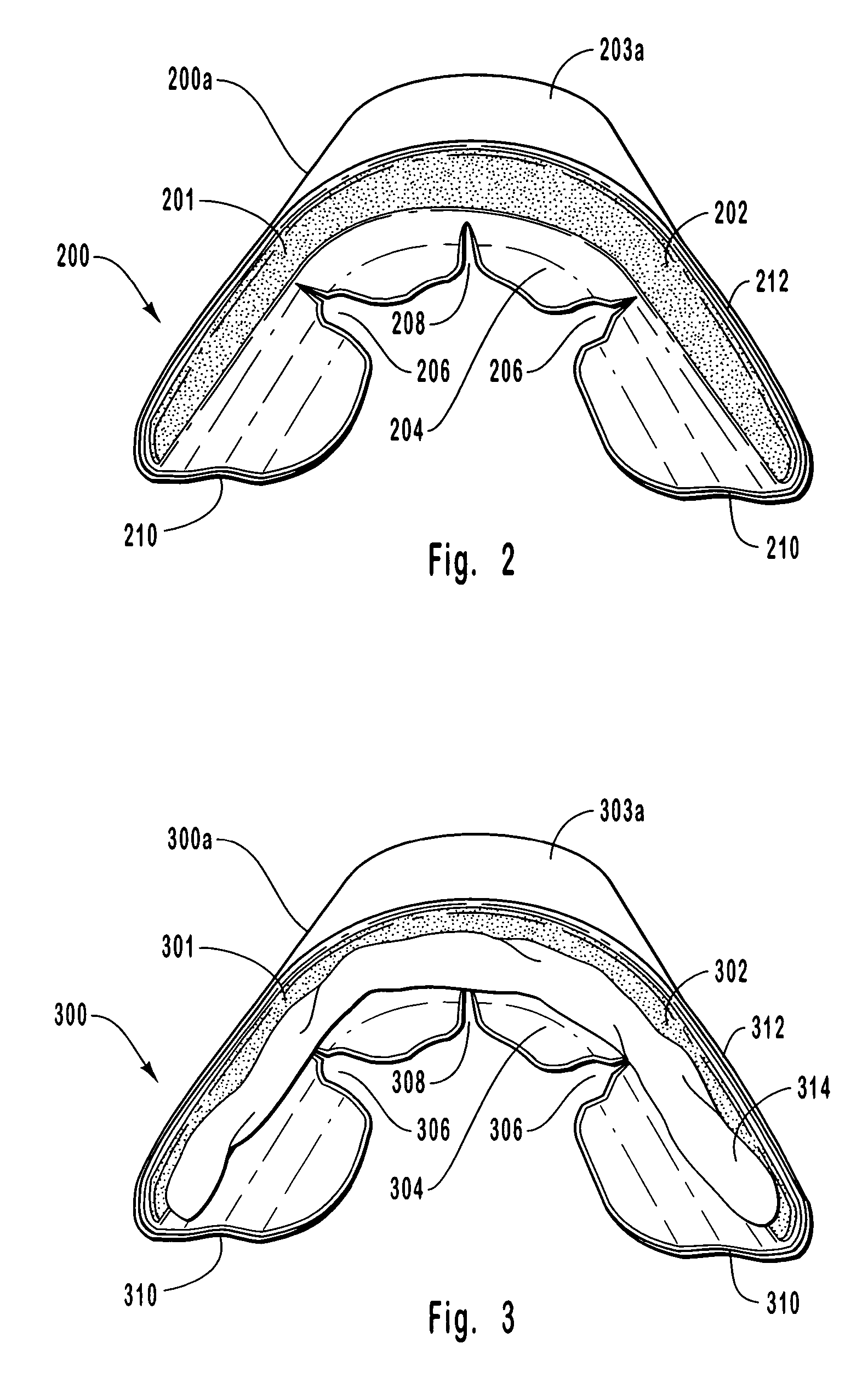Universal non-custom dental tray having anatomical features to enhance fit
a dental tray and non-custom technology, applied in the field of dental tray shaped devices, can solve the problems of significant portion of the bleaching composition not remaining on the teeth, affecting the fit, and being directly exposed to the saliva of the person, so as to improve the fit and enhance the anatomical fi
- Summary
- Abstract
- Description
- Claims
- Application Information
AI Technical Summary
Benefits of technology
Problems solved by technology
Method used
Image
Examples
example 1
[0103]An initially flowable adhesive composition suitable for use in manufacturing a substantially solid adhesive composition was formed by mixing together the following components:
[0104]
Ethanol31.95% Water10%Polyvinyl Pyrrolidone (M.W. = 1.3 million)27%Polyvinyl Pyrrolidone (M.W. of about 60,000)10%Sodium Laurel Sulfate0.5% Glycerine15%Sucralose 25% solution0.5% Peach Flavor 4%Potassium Nitrate0.8% Sodium Fluoride0.25%
[0105]The resulting adhesive composition was spread over the surface of a large flat sheet formed of 80% ethyl vinyl acetate and 20% polypropylene. The EVA / PP sheet had a thickness of about 0.15 mm. The adhesive composition was spread using a skreeding device. The coated sheet was heated in a forced air oven until the adhesive composition dried. The coated sheet was removed from the oven and inspected. The adhesive composition had dried sufficiently so as to form a substantially solid layer on the surface of the polymer sheet. The adhesive composition was dry to th...
PUM
 Login to View More
Login to View More Abstract
Description
Claims
Application Information
 Login to View More
Login to View More - R&D
- Intellectual Property
- Life Sciences
- Materials
- Tech Scout
- Unparalleled Data Quality
- Higher Quality Content
- 60% Fewer Hallucinations
Browse by: Latest US Patents, China's latest patents, Technical Efficacy Thesaurus, Application Domain, Technology Topic, Popular Technical Reports.
© 2025 PatSnap. All rights reserved.Legal|Privacy policy|Modern Slavery Act Transparency Statement|Sitemap|About US| Contact US: help@patsnap.com



